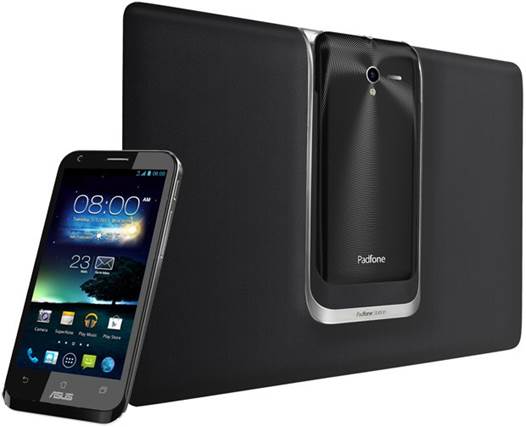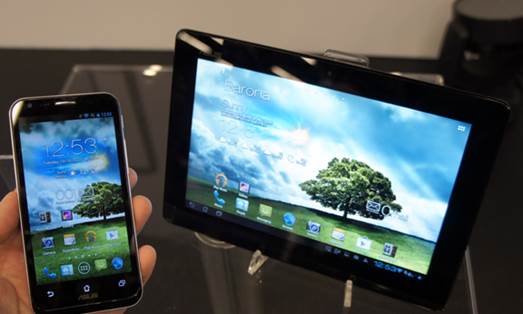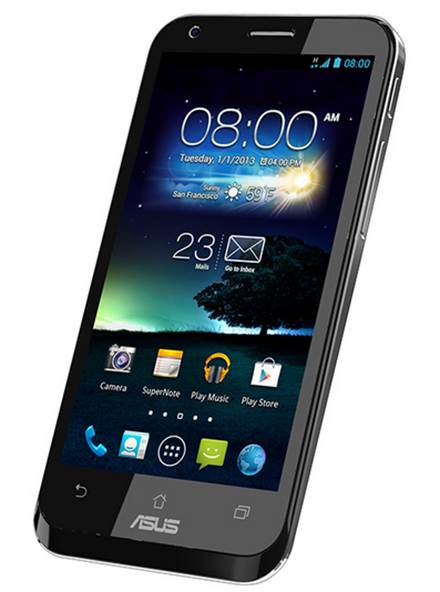It has been half of a year since the launch
of the unusual Padfone in select markets was made, and earlier this week, the
old question arises with the introduction of the second generation
phone-in-tablet of Asus: Will we be better off with just one mobile screen
instead of two? Question this to any manufacturer and the answer you receive
might be the latter one, because who does not want to sell more product?
Similarly, carriers will also support such manufacturers for the purpose of
selling more data plans although they may really look up on Asus’s effort (they
might have been selling Asus’s products from the very beginning). Some also debate
that if you have to bring a tablet with you anyway, you might also have two
distinct devices for the purpose of better multitasking.

Asus
PadFone 2
It seems to be a huge challenge to conquer,
but looking at the positive side, this innovative modification from Asus also
has some certain advantages. You just need a data plan (without the requirement
of tethering) for two form factors. Then you keep the similar data in a place
instead of duplicating them and you are able to switch between the small screen
and the large screen almost immediately for the same content. That still we
have not mentioned the phone charging ability when it is lying inside the
tablet yet. However, the original PadFone and the PadFone Station did not hit
the right point: This combination leads to the heavy weight and bulk which
cannot excuse for the idea of a phone-in-tablet, which is the main reason we carry
out the evaluation about this PadFone 2 in our review. Let’s see whether Asus
made the right decision this time.

The
attraction of the phone-in-tablet combination
Hardware - Phone
Let’s start with the key specifications. By
powering PadFone 2 with the newest and most wonderful Snapdragon S4 Pro APQ8064
from Qualcomm, a 28nm, SoC 1.5GHz quad-core which is based on the Krait
structure (better than Cortex-A9 in many aspects), Asus has become the third
manufacturer that provides the APQ8064 for phones after LG Optimus G (which has
been reviewed recently) and Pantech Vega R3, and it is succeed by Xiami Phone 2
in China and HTC J Butterfly in Japan. Beside the fact that its graphics have
2GB RAM to smooth the process like other flagship phones, it also driven by the
powerful Adreno 320. In terms of the camera, the place which has been used for
the 8MP, f/2.2 main camera before now becomes the home for the Sony BSI 13 MP
sensor plus 5-elements optics, f/2.4. Meanwhile, the 0.3MP front camera has
been replaced by the 1.2MP one. Just like usual, we will check the performance
of the cameras later on.
In Taiwan, the new PadFone is available
with the 16GB, 32GB and 64GB versions, while there are just two versions, the
32GB and 64GB, in Europe. However, unlike its predecessor, it is unfortunate
that this device does not have the microSD expansion. Users who want to have
more storage capacity will have to accept the solution of USB OTG or cloud. Customers,
after purchasing for the product, will have 50GB of free Asus WebStorage
service in 2 years, which surely helps promoting the idea of Asus Open Cloud
Computing, but we will clarify this issue in the software session of this
review.

The
phone
The radio MDM9125m’s cellular connection of
Qualcomm is supposed to support the GSM/EDGE/UMTS/DC-HSPA+/LTE – the
compatibility will be dependent of the special local version: universal, North
America (2 versions), Japan, Australia and China. This review is based on the
global model which supports GSM 850/900/1800/1900, WCDMA 900/2100 and LTE
800/1800/2600. However, because there is no LTE network in Taiwan (ironically),
we could only use the 3G for most of the evaluating time – we went back to Hong
Kong in a very short time and tried to connect into LTE network there. We were
really pleased with the performance on both ends of the call, even in crowded
and noisy environment thanks to the ambient noise reduction technology. Other radio
is comprised of the regular 802.11a/b/g/n, Bluetooth 4.0, FM radio, GPS and
GLONASS.
From far distance, the PadFone’s design can
make it be easily mistaken with its predecessor, but when laying them side by
side, you will be able to distinguish easily the 4.7 inch, 720p, 500 nit
larger, brighter Super IPS + LCD display. We can even say that the new display
is so bright that it still blurs our eyes completely in the dark with its
dimmest setting. We hope this is not a fixed setting that Asus will change it. Our
One X (AT&T) does own the similarly impressive view angle and the gapless
display, although the PadFone 2 seems to have better and more accurate white
balance – the culprit of the former is the warm artificial tone. The Super
AMOLED of the original PadFone can impress some people with its lively colors,
but in general, its LCD screen is still the king in the aspect of accuracy,
pixel density and outdoors performance.